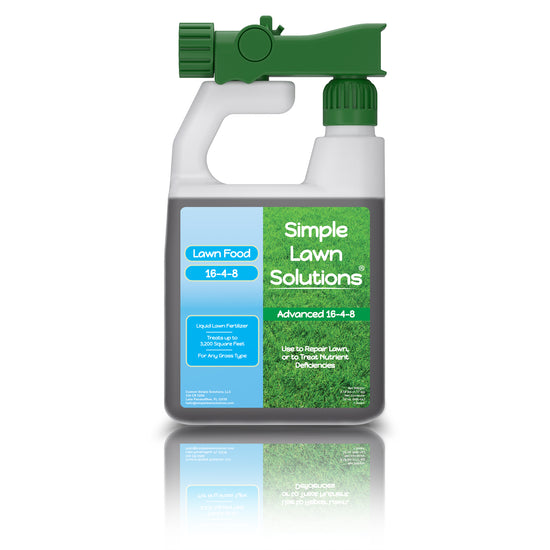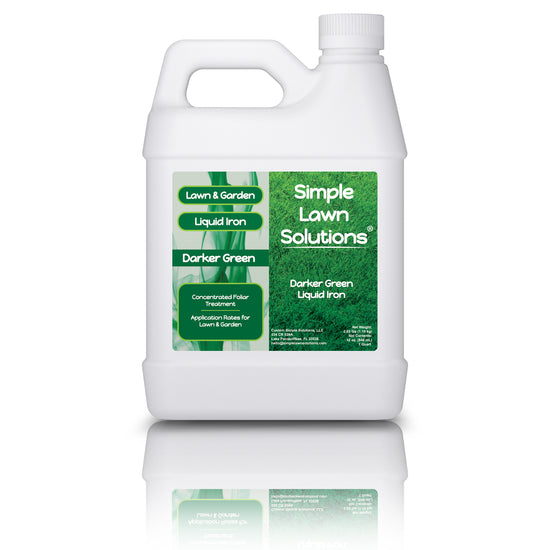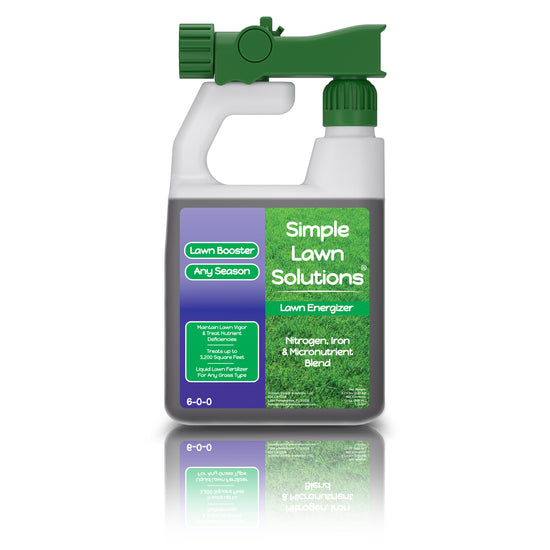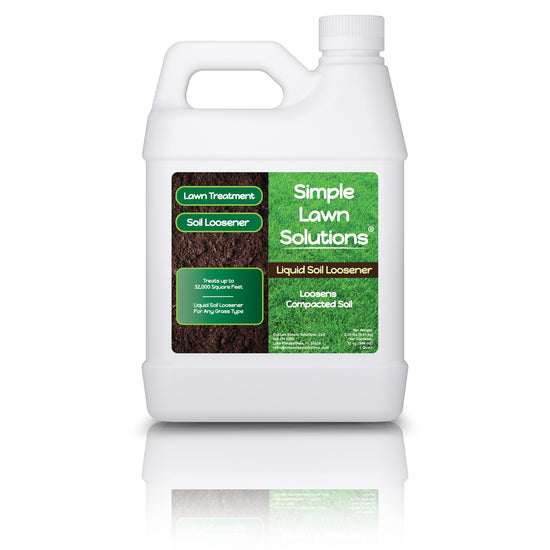If you're new to lawn care and want a healthy, vibrant lawn, you need to start with the basics and learn best practices. Whether you’re managing cool-season grasses like Kentucky Bluegrass, Perennial Ryegrass, or Tall Fescue, or warm-season grasses like Bermuda or Zoysia, here’s a foundational guide to building strong turf from the soil up.
Before Anything Else, Identify Your Turf Species
Being new to lawn care can bring many questions on what to do, when, and how to do it. The first step in creating the perfect lawn is knowing which type of grass grows and performs best in your specific region -whether it’s cool season or warm season variety. Cool-season grasses- such as Kentucky bluegrass, perennial ryegrass, fine fescues, and tall fescue- perform best in the north and northeast of the United States. Warm-season grasses- such as Bermuda, zoysia, centipede, and St. Augustine- perform best in the south and southeast part of the United States.

Soil Testing for Determining Soil Type, pH, and Nutrient Profile
Once the proper turfgrass has been selected based on region, next is determining what type of soil is on site and the nutrients it contains to assist the grass to grow successfully. Determining this factor requires a procedure that tests the soil and its nutrient properties. Performing a soil test requires visiting a local agricultural extension agency and requesting a soil testing packet that will be sent to a state university for detailed analysis.
Once the soil has been tested, the results will reveal soil pH, nitrogen, phosphorus, potassium, and many micronutrients. A low or high pH reading will make it difficult for the grass to grow to its fullest potential and absorb nutrients in the soil or nutrients applied, making this step critical. The ideal pH range for growing turfgrass is between 6.0 and 7.0. A low pH is below 6.0 making it acidic, and lime is required to increase the pH to make it more neutral. A high pH above 7.1 is alkaline and requires elemental sulfur to decrease to 6.0 - 7.0.

Follow an Appropriate Irrigation Schedule
Another essential element required for growing turfgrass is water applications through irrigation to help seeds germinate, root, and survive. Water is also needed to break down and transport applied nutrients. Once your lawn is established, it’s important to follow an irrigation program that will meet the needs of the grass, but never too much, as this can cause additional issues with growth. Most turfgrasses require 1” - 1.5” of irrigation and rain per week to perform best. For best results, irrigation should be performed before 9 am, irrigating deeply and infrequently is best for turfgrass survival and performance. Shallow, daily watering, encourages weak, shallow roots and disease and should be avoided.
Mowing your Grass at the Proper Height
Maintaining a professional-looking lawn requires mowing at the proper height for the type of turfgrass selected. Not all grasses can be mowed at the same height due to the size of the leaf tissue and growing habits. Keeping the mowing blades or reels sharp is key to having an attractive lawn and following an essential rule of never removing more than ⅓ of the leaf tissue in a single mowing. Cool-season grasses are best mowed between 2.5” - 4.0” while warm-season grasses are best mowed between 1” - 2.5”. Recycling the grass clippings returns nutrients to the soil and maintains a balance of nutrients throughout the growing season.

Accurately and Responsibly Apply Lawn Fertilizer
Once your soil test has been reviewed, following the recommendations detailed within the report is of the utmost importance. It’s important to only add nutrients required for optimum growth, as excess nutrients not needed can contaminate the soil and water by making them toxic. Applying only what is needed is best for the success of your lawn from the initial stages of growth. Cool-season grasses respond best to fertilization applied in the spring and fall, while warm-season grasses respond best to late spring and throughout summer fertilization.
Slow-release fertilizer provides excellent results by delivering nitrogen gradually, which sustains turfgrass growth over a longer period. In contrast, over-fertilizing can do more harm than good. An excess of nitrogen and other nutrients can trigger rapid, uncontrolled growth, creating ideal conditions for lawn diseases and attracting more insect activity. Moreover, over-fertilization can contribute to a thick thatch layer—another serious problem that can compromise the health of your lawn.

Core Aeration in High Traffic Areas of the Lawn
Grass requires water and oxygen within the root zone, and compacted soil does not allow these elements to enter the profile fully. Core aeration is the practice of penetrating the soil with a coring tine and removing a small cylinder of the soil so there is an opening in the surface and root zone profile. High clay-type soils benefit the most by core aeration due to their compact characteristics. Turf sections that contain a lot of foot or mechanical traffic also require core aeration regardless of the soil type used as a growing medium. This allows oxygen, water, and nutrients to flow freely, benefiting the grass plant's roots and leaf tissue. The nutrients that are applied are more readily taken up by the roots, and that energy is transferred to the plant's overall health.
Overseed Bare Spots
Overseeding, or introducing new plant tissue, is recommended for different reasons on your home lawn including filling bare spots. Overseeding will keep the lawn full and dense throughout its life cycle. Cool-season lawns should be seeded in the late summer or early fall for the best chances for survival. However, warm-season grasses are mostly grown from plugs and sod because some do not produce a vital seed. Selecting varieties that are improved cultivars increases the defenses against diseases and drought. Make sure there is seed-to-soil contact by using a rake, slit seeder, or topdressing afterward, as this will give the seed something to grow and root within and spread.
Manage Weeds Early
Regardless of how dense a lawn is, there will always be the possibility of weeds growing and becoming unsightly while disrupting the aesthetics of turfgrass. Using a pre-emergent herbicide can assist in eliminating the potential of your lawn being taken over by unsightly weeds. Soil temperatures determine when a pre-emergent herbicide is to be applied. Once the soil temperatures hit 55 degrees, weed seeds can germinate and grow. Applying a pre-emergent herbicide when the temperatures are 50 - 55 degrees is best as far as timing to control weeds. As the growing season continues, there will most likely be spot weeds that emerge and require spot treatment with a selective post-emergent herbicide to keep the lawn uniform. Only treat the weed, not the entire lawn, unless the population is spread throughout.
Monitor for Insects and Diseases
Environmental stresses in the lawn can bring insects and diseases to eat at the leaf tissue and roots. It’s important to be on the lookout for these culprits so corrective actions can be taken before excessive damage occurs. Certain weather conditions and combinations can create the perfect environment for disease pathogens to grow. The combination of humidity, temperature, and moisture causes pathogens to grow and infect the leaf tissue, crown of the plant, and roots. Diseases like brown patch, red thread, and other fungi can infect the turfgrass tissue and create adverse growing conditions while damaging the lawn.

Grubs and other piercing and sucking insects will cause extensive damage if left unmanaged. Using an Integrated Pest Management program will assist in maintaining the lawn and reduce the occurrences of fungi and insect activity. However, certain thresholds can warrant chemical treatment through fungicides and insecticides. When the damage could cost more to correct than the cost of treatment, chemical treatment can be justified.
Follow A Seasonal Lawn Plan
A plan when maintaining your lawn, starts with predetermining what will be required and the timing it will need to be applied. All tasks on your lawn should be planned to cover all aspects of lawn maintenance. Fertilization, mowing adjustments, weed control, core aeration, topdressing, and other tasks are best when predetermined in advance. Being precise in everything that is applied or performed on your lawn will make the lawn more aesthetically pleasing and something to be proud of when the end product follows a precise plan.
Bonus Tips For Beginners
Start small and focus on getting the soil, mowing, and irrigation practices correct before chasing perfection. Keeping records of all tasks and fertilization will assist in making correct decisions and adjustments in the future of the lawn. Include soil testing once per year until the soil is within optimum growing conditions for the lawn. Lawn care is a season-long and multi-year process that must be carried out for a successful lawn care program. Be precise in all details when applying the correct rates with fertilization, weed control, insect control, and diseases.
Never use more than the lawn needs, as over application of nutrients can adversely affect your turfgrass. Irrigation will be a valuable tool to enhance the growth of the lawn, but it can also become detrimental if utilized incorrectly. Keep the mowing blades and reels sharp and maintain the recommended height of cut for your type of grass.









